Today’s post is about American Lotus, dragonflies, and the rich habitat of Reeve’s Slough at Sequoyah National Wildlife Refuge in northeastern Oklahoma. I am still going through the images I took in Arkansas and Oklahoma while I visited my dear friend and fellow photographer, Steve Creek. My time there was very productive, relaxing, and Steve’s company was exactly what I needed during my time of rest, recuperation, and grief.
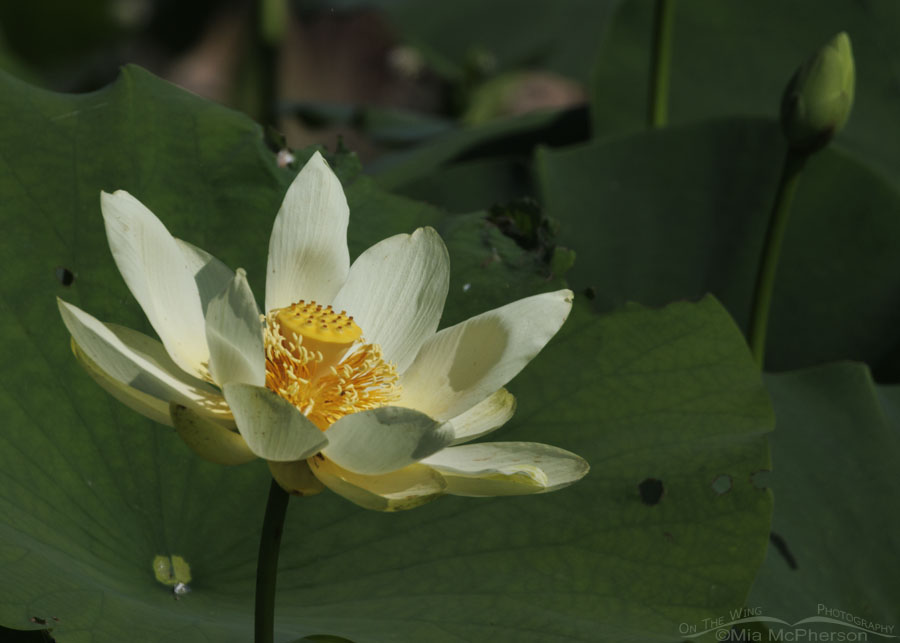 Blooming American Lotus at Sequoyah NWR – Canon R7, f11, 1/1250, ISO 250, -1.0 EV, Canon RF 800 mm, natural light
Blooming American Lotus at Sequoyah NWR – Canon R7, f11, 1/1250, ISO 250, -1.0 EV, Canon RF 800 mm, natural light
Reeve’s Slough at the refuge is a delightful, almost magical place. I photographed lotus blossoms, an adorable White-tailed Deer fawn and two does, wading birds, and dragonflies there. Had I visited with Steve longer, I am sure more magic would have revealed itself to me.
Steve has shared some recent photos that he took at this slough on his site recently. Visit his Dragonfly, Spider, And The American Lotus and Green Tree Frog on an American Lotus Leaf posts to read more about this wonderful slough and lotus habitat.
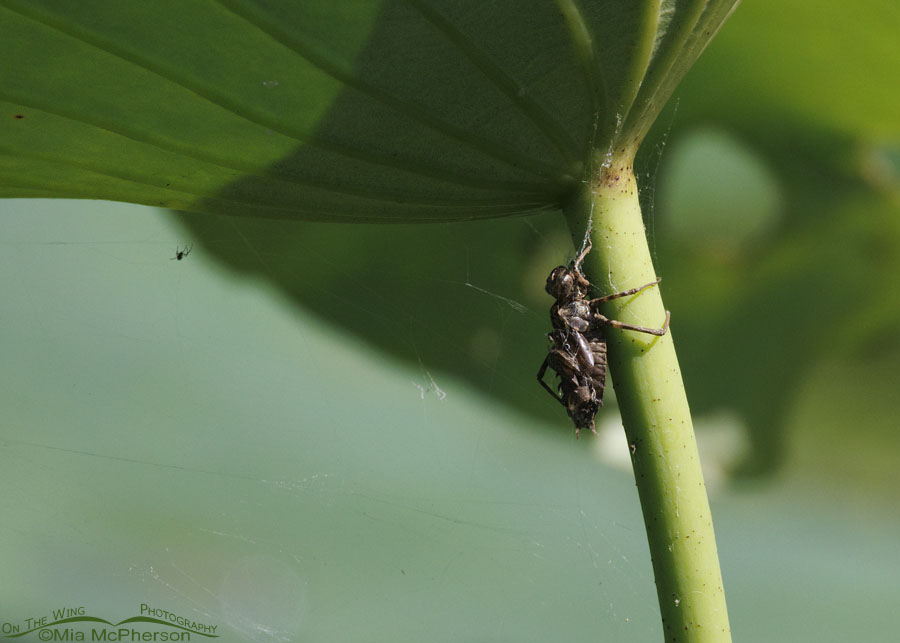 Dragonfly nymph exoskeleton on a lotus – Canon R7, f11, 1/1000, ISO 1000, -0.3 EV, Canon RF 800 mm, natural light
Dragonfly nymph exoskeleton on a lotus – Canon R7, f11, 1/1000, ISO 1000, -0.3 EV, Canon RF 800 mm, natural light
When I looked beyond the stunning lotus flowers, I could see the great habitat they provide for spiders and insects, including dragonflies.
Just before the Summer Solstice, I found a dragonfly nymph exoskeleton underneath one of the platter-sized lotus leaves. In my excitement, I didn’t realize, when I took this photo, that there was also a tiny spider next to it. Dragonflies go through several stages as nymphs before they emerge from their exoskeletons and take to the air.
I am not sure which dragonfly species the exoskeleton is from so I haven’t included it in my photo galleries.
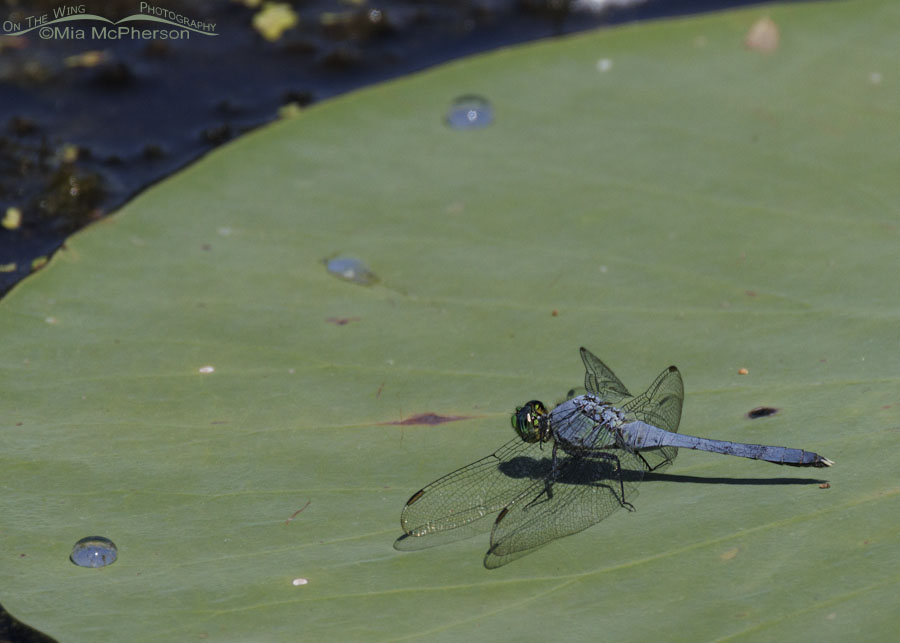 Male Eastern Pondhawk on a lotus leaf – Canon R7, f11, 1/1250, ISO 640, -0.3 EV, Canon RF 800 mm, natural light
Male Eastern Pondhawk on a lotus leaf – Canon R7, f11, 1/1250, ISO 640, -0.3 EV, Canon RF 800 mm, natural light
On the same day that I took the photo of the dragonfly exoskeleton, I was able to take this image of a male Eastern Pondhawk dragonfly resting on one of the lotus leaves. I used to see and photograph this dragonfly species in Florida when I lived there. I was thrilled to take this image.
Eastern Pondhawks in other parts of Sequoyah NWR:
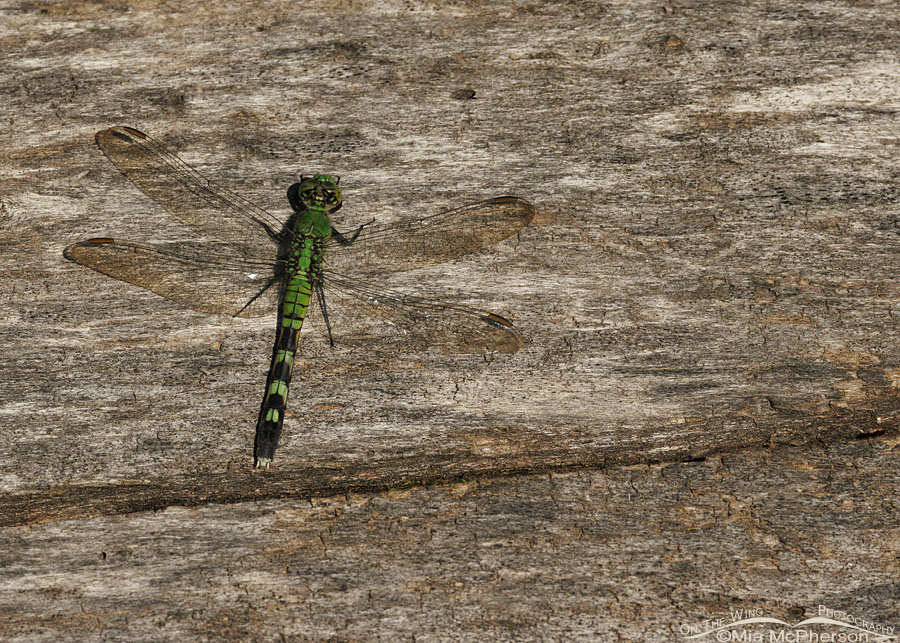 Female Eastern Pondhawk on a fallen log – Canon R7, f8, 1/1250, ISO 400, Canon RF 100-500mm at 500mm, natural light
Female Eastern Pondhawk on a fallen log – Canon R7, f8, 1/1250, ISO 400, Canon RF 100-500mm at 500mm, natural light
Female Eastern Pondhawks look nothing like the males. They are green instead of blue, and they have black patterns that the males don’t have. I photographed this female Eastern Pondhawk resting on a fallen, decomposing log in another part of the refuge. Her green coloration rivaled the lush green of the spring grasses.
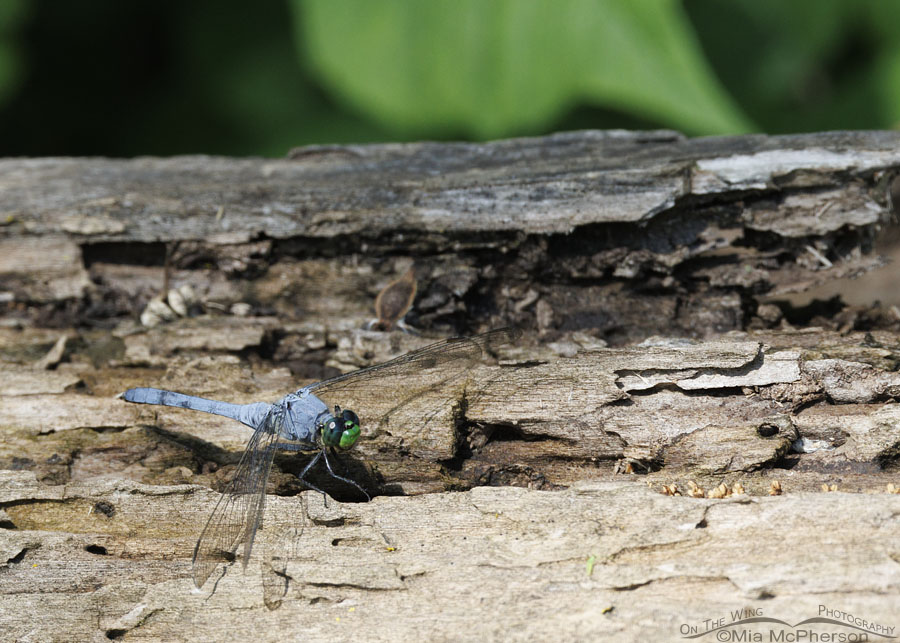 Male Eastern Pondhawk on a fallen log – Canon R7, f8, 1/800, ISO 400, Canon RF 100-500mm at 500mm, natural light
Male Eastern Pondhawk on a fallen log – Canon R7, f8, 1/800, ISO 400, Canon RF 100-500mm at 500mm, natural light
On another day and in a different part of the refuge, I photographed another male Eastern Pondhawk, also resting on a fallen log. I liked how it appeared as if this male pondhawk was smiling.
Reeve’s Slough and the wildlife I saw and photographed there enchanted me. The slough, along with Steve’s company, also helped me reconnect with nature after my physically and emotionally exhausting trip back home to Virginia. Nature heals, soothes, and balances my spirit.
Life is good.
Mia
Click here to see more of my wildflower, shrub and tree photos. Click here to see more of my insect and spider photos.


Gorgeous– and dragonflies, sometimes called ‘mosquito hawks’ eat mosquitos. Anywhere from 30 to 1,000 a day.
https://www.smithsonianmag.com/science-nature/14-fun-facts-about-dragonflies-96882693/
What a terrific set of Dragonfly pics! It always amazes me how well you capture detail and textures. In these shots it’s not just limited to the exquisite delicacy of the Dragonfly wings but the near microscopic shadows under the wings. Thanks Mia.
Amazes me the way such gorgeous dragonflies come from such odd-looking nymphs. The female is quite the stunner!
I am unsurprised that you are fascinated with dragonflies and appreciate their beauty – yet more winged enchantment.
So lovely to see the pond hawk. These dragonflies never cease to enchant! Thanks for your coverage of the field!